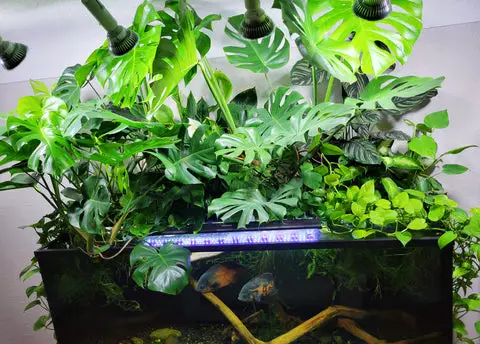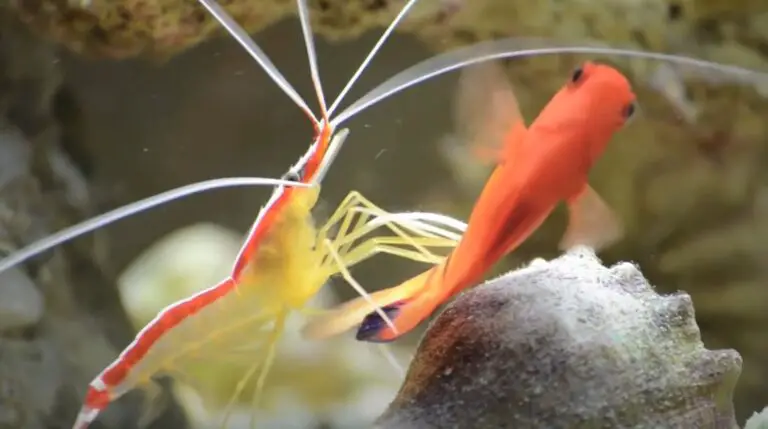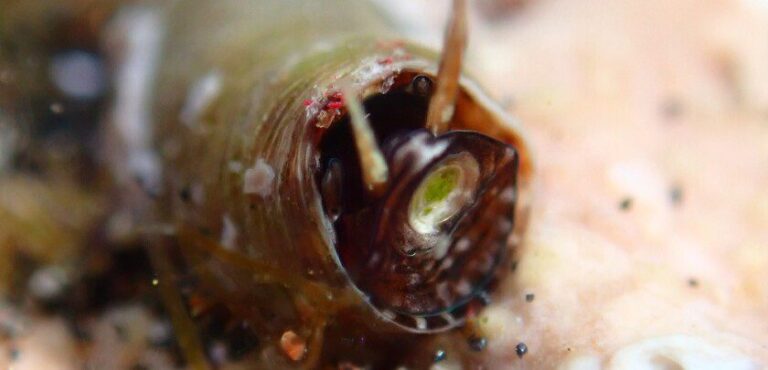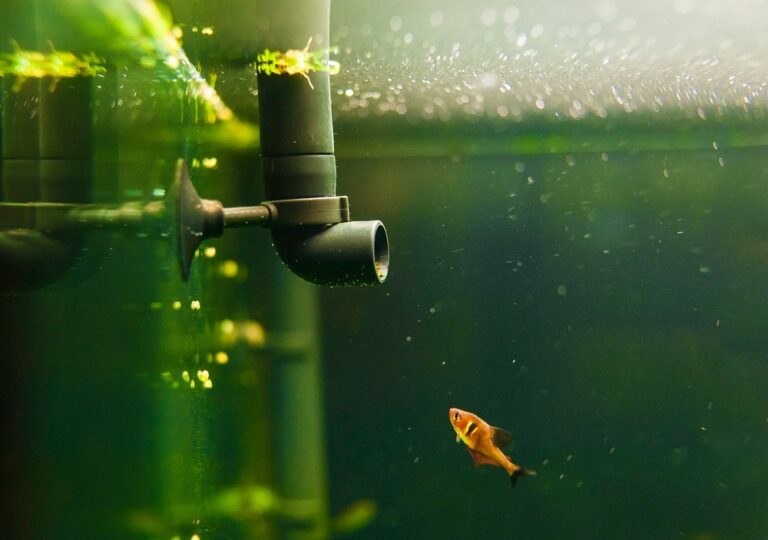Rising Greenery: Aquarium Plants That Grow Out of Water
Aquarium plants that grow out of water are called emergent aquatic plants. These typically have long, strappy leaves and a stem that extends above the water’s surface. Examples include reeds, cattails, bulrushes, papyrus, and floating-leaved pondweeds.
Emergent plants help keep the water clean by absorbing excess nutrients from it. They also provide habitat for fish and other aquatic wildlife and can be used to enhance the beauty of an aquarium or pond setting. Additionally, these plants offer protection from predators for both adult fish and their fry (baby fish).
Aquarium plants that can grow out of water are an excellent addition to any aquarium, as they provide a unique look to the tank and help create a more natural environment. These aquatic plants are hardy and can survive in both freshwater and saltwater, making them perfect for any type of tank.
Additionally, some species of these plants have even been known to thrive completely submerged in water! With their vibrant colors and lush foliage, these plants will make your aquarium truly eye-catching.
Best Emersed Aquarium Plants
As a beginner in the world of aquascaping, you’ve embarked on a journey filled with creativity, beauty, and the opportunity to build a thriving aquatic ecosystem. Emersed aquarium plants, with their unique blend of above-water and submerged growth, can be a fantastic addition to your tank. I’ll introduce you to the best emersed aquarium plants, offer valuable care tips, and recommend species that are perfect for newcomers to the hobby.
Why Choose Emersed Aquarium Plants?
Emersed plants offer several benefits for beginners:
- They are typically hardier and more forgiving of beginner mistakes.
- Emersed growth can help oxygenate your tank and improve water quality.
- These plants can be a great addition to your aquascape, adding texture, color, and depth.
Top Emersed Aquarium Plants for Beginners:
- Anubias (Anubias spp.):
- Why It’s Great for Beginners: Anubias is hardy and versatile, thriving in both emersed and submerged conditions.
- Care Tips: Low to moderate light, attach to driftwood or rocks, avoid burying the rhizome.
- Java Fern (Microsorum pteropus):
- Why It’s Great for Beginners: Java Fern is known for its adaptability and low maintenance requirements.
- Care Tips: Low to moderate light, attach to driftwood or rocks, avoid burying the rhizome.
- Cryptocoryne Wendtii:
- Why It’s Great for Beginners: Cryptocoryne Wendtii is hardy and comes in various colors and shapes.
- Care Tips: Low to moderate light, stable water parameters.
- Peace Lily (Spathiphyllum spp.):
- Why It’s Great for Beginners: While not a traditional aquarium plant, Peace Lilies thrive emersed and help improve air quality.
- Care Tips: Low to moderate light, occasional pruning.
- Amazon Sword (Echinodorus amazonicus):
- Why It’s Great for Beginners: Amazon Swords are hardy and can be grown emersed initially.
- Care Tips: Medium to high light, root tab fertilization.
Care Tips for Emersed Aquarium Plants:
- Lighting: Most emersed plants do well in low to moderate light conditions. Ensure your tank light is appropriate for the chosen plants.
- Substrate: Use a nutrient-rich substrate or add root tabs for heavy feeders like Amazon Swords.
- Humidity: Maintain a high level of humidity in the emersed environment. A clear lid or plastic wrap can help retain moisture.
- Watering: Keep the substrate consistently moist but not waterlogged. Mist the plants regularly to maintain humidity.
- Temperature: Maintain the emersed environment at a temperature suitable for the chosen plants.
- Fertilization: Some plants may benefit from a balanced liquid fertilizer, but be cautious not to overdo it.
- Propagation: Emersed growth makes plant propagation easy. Trim healthy stems and replant them to expand your garden.
Choosing the right emersed aquarium plants for your beginner setup can greatly enhance the visual appeal and health of your aquatic environment. Whether you prefer the elegant Anubias, the adaptable Java Fern, or the colorful Cryptocoryne Wendtii, there’s a perfect plant for you.
Semi Aquatic Plants for Aquarium
Semi-aquatic plants are a great way to add a unique and interesting look to your aquarium. These plants thrive in the shallow water of an aquarium, often surviving on minimal maintenance and offering up vibrant colors, shapes, and sizes. They can be used as natural decorations that help enhance the appearance of your tank while also providing oxygenation for fish and other aquatic life.
Many semi-aquatic plants are very easy to care for, making them ideal for beginner aquarists or those with limited time to devote to their tanks.
Aquarium Plants That Grow Above Water
Aquarium plants that can grow above water, also known as emersed or marginal plants, can add an interesting dimension to your aquatic setup. These plants typically have leaves that extend out of the water while their roots remain submerged. Here are some popular aquarium plants that can grow above water:
- Peace Lily (Spathiphyllum spp.): While not a traditional aquarium plant, Peace Lilies can thrive emersed in aquariums. They have attractive, glossy leaves and help improve air quality.
- Spider Plant (Chlorophytum comosum): Like Peace Lilies, Spider Plants are not aquatic plants, but they can grow emersed in an aquarium. They have long, arching leaves and are known for their air-purifying qualities.
- Pothos (Epipremnum aureum): Pothos, also known as Devil’s Ivy, is a popular choice for aquariums. Its trailing vines with heart-shaped leaves can grow both submerged and emersed. It’s known for its ability to remove excess nutrients from the water.
- Umbrella Plant (Cyperus alternifolius): The Umbrella Plant is a marginal aquatic plant that can grow partially submerged or emersed. It has tall stems with umbrella-like clusters of leaves.
- Sword Plant (Echinodorus spp.): While most sword plants are considered submerged aquarium plants, some species like Echinodorus cordifolius can grow both submerged and emersed. These plants produce long, lance-shaped leaves above the waterline.
- Sedges (Carex spp.): Some species of sedges can be used as marginal plants in aquariums, with their roots submerged and grass-like leaves extending above the water’s surface.
- Cryptocoryne species: Certain Cryptocoryne species, like Cryptocoryne crispatula, can grow both submerged and emersed. They produce tall, slender stems with leaves above the water.
- Ludwigia species: Some Ludwigia species can be grown emersed along the water’s edge in aquariums. These plants typically have colorful foliage.
When cultivating these plants in an aquarium, it’s important to consider their specific care requirements, including lighting, water conditions, and maintenance.
Additionally, make sure to provide a suitable substrate for the submerged roots and maintain the appropriate water level to support emersed growth. These plants can add variety and a unique aesthetic to your aquatic environment.
Can Aquatic Plants Grow Out of Water?
Aquatic plants, by definition, are adapted to grow either entirely submerged in water or with their roots submerged while the rest of the plant extends above the water’s surface. These plants have evolved specific adaptations to thrive in aquatic environments.
However, some aquatic plants can also grow partially or entirely out of water, depending on their species and environmental conditions.
Here are a few ways aquatic plants can grow out of water:
- Emersed Growth: Many aquatic plants can switch between emersed (above water) and submerged (underwater) growth forms. This adaptation allows them to survive in changing water levels. When water levels drop, these plants grow out of the water to reach air and sunlight. When water levels rise, they adapt to their submerged form. Common examples include Anubias, Java Fern, and Cryptocoryne.
- Floating Plants: Some aquatic plants, like Water Hyacinth and Water Lettuce, are natural floaters. They grow on the water’s surface, with their roots submerged and their leaves floating above. These plants can be an excellent addition to ponds and aquariums.
- Marginal Plants: Marginal aquatic plants are adapted to grow along the edges of bodies of water, where their roots are submerged, but their stems and foliage extend above the water’s surface. Examples include cattails and some types of iris.
- Bog Plants: Certain aquatic plants, like some species of sedges and rushes, are adapted to grow in shallow water or in areas that are periodically flooded. These plants can have their roots submerged, but a significant portion of their growth occurs above the waterline.
It’s important to note that while many aquatic plants can grow out of water to some extent, their care and growth patterns may vary depending on their specific species and environmental conditions.
If you plan to cultivate aquatic plants in both submerged and emersed conditions, you should research the requirements and preferences of each plant species to ensure they thrive in your setup.
Inch Plant in Aquarium
The Inch Plant, or Tradescantia spathacea, is an aquatic plant that can be a great addition to any aquarium. It is known for its long and slender leaves, which are greenish-brown in color with silver markings along the edges of the leaf. This hardy plant will thrive in almost any water condition and requires little maintenance.
Its roots do not need to be rooted into the substrate, but they do require adequate lighting to reach their full potential. The Inch Plant is a wonderful choice for novice aquarists, as it’s easy to care for and adds much-needed oxygenation and beauty to your tank!
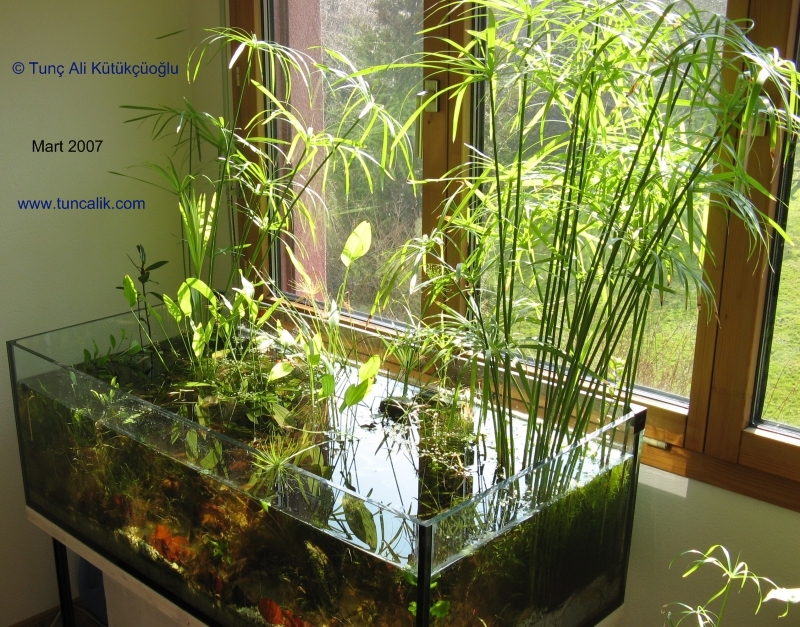
Credit: www.tuncalik.com
What Aquarium Plants Can Be Grown Out of Water?
Aquarium plants are not just for decorating the inside of your tank; they can also be grown out of water! Aquatic plants that can be grown out of water include Java moss, Anubias barteri, and some varieties of ferns. These aquatic plants require minimal care when grown outside an aquarium.
All you need is a moist substrate, such as soil or gravel, to provide enough moisture for the roots to thrive. Additionally, make sure to provide adequate light for photosynthesis and growth; natural sunlight is ideal, but artificial lighting will work too. It’s best to keep these plants away from direct heat sources like radiators or air vents in order to avoid drying them out too quickly.
When first planting the aquatic plant into its new home, it’s essential that you submerge it in water until all air bubbles have been released from its leaves; this helps prevent any shock when moving it from one environment to another. With regular care and maintenance, these aquarium plants can be enjoyed both inside and outside the tank!
How Do I Get My Aquarium Plants to Grow Out of Water?
Aquarium plants can be a beautiful addition to any aquarium, but getting them to thrive in your tank is no easy task. While some aquatic plants may require special care and attention, there are several methods you can use to help your aquarium plants grow out of water.
One option is the floating method, where you place the plant inside a mesh bag or net and simply allow it to float on top of the water surface. This will provide enough aeration for the roots while still allowing plenty of light exposure for photosynthesis.
You can also create an artificial substrate by using something like gravel or pebbles at the bottom of your tank; this will give your aquatic plants something solid to attach their roots too as they grow out of water.
Finally, make sure that you provide adequate amounts of nutrients in order for them to live and flourish; fertilizers specifically designed for aquatic plants are always recommended as these contain all essential nutrients needed for healthy growth and development.
With these tips in mind, you should have no problem growing vibrant aquascaping displays with multiple types of aquarium plants!
What Aquarium Plants Can Grow on Land?
Aquarium plants that can grow on land are a great option for anyone looking to spruce up their tank. Many aquatic plants, such as Anubias and Java Fern, can thrive in both water and soil environments.
These plants require specific conditions to be met, such as proper lighting and plenty of nutrients, but they have the potential to become beautiful additions to your aquarium.
Other terrestrial options include orchids, bromeliads, cacti, and succulents, all of which offer unique textures and colors that will bring life to any aquatic environment. Of course, it is important not just for aesthetics when selecting these types of aquarium plants.
You also want to ensure that the plant’s needs are being met so it doesn’t die prematurely. Be sure to research each species carefully before making your purchase so you know what kind of environment it prefers in order for it to thrive!
These 5 Easy House Plants Filter Your Aquarium!
Conclusion
In conclusion, aquatic plants that grow out of water provide a great way to add some variety and color to an aquarium. Not only are they beautiful, but they can also help create natural habitats for fish and other aquatic animals. They may require more attention than regular aquatics, but with the right care and maintenance, these amazing plants will thrive in any aquarium environment.
